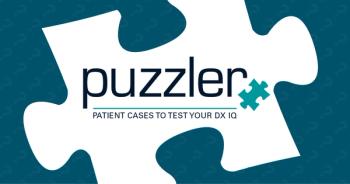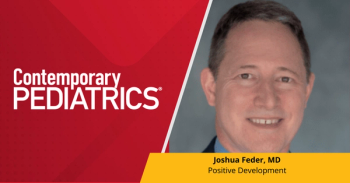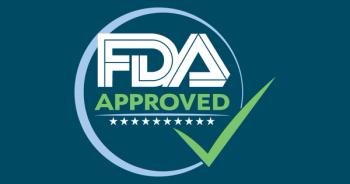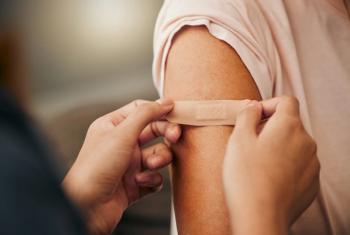
- October 2025
- Volume 41
- Issue 7
Screening for suicide ideation and suicide attempts is a priority
Donna Hallas, PhD, PPCNP-BC, CPNP, PMHS, FAANP, FAAN, shares her thoughts on a featured article from the October 2025 issue of Contemporary Pediatrics.
In the October 2025 issue of Contemporary Pediatrics, Robert M. Cavanaugh, Jr, MD, and Karen L. Teelin, MD, discuss the importance of psychosocial screening for adolescents using the HEADS FIRST checklist.1 The HEADS FIRST checklist identifies an initial question for each first letter in the screening tool, e.g., Home: Education: Abuse: Drugs: Safety: Friends: Image: Recreation: Sexuality: and Threats. The figure in their article1 identifies the specific question to ask for each group, and if a positive response is elicited, then additional questions are discussed in the article that may lead to uncovering details about the adolescent’s problems that need to be addressed. These additional questions are worth reviewing as they lead to very specific concerns that pediatric health care providers need to ask of all adolescents to ensure psychosocial safety. In fact, I feel strongly that psychosocial questions should be asked of all teenagers, whether they respond yes or no to the initial questions, especially while using the HEADS FIRST tool, as the initial question may not gather the information about the high-risk psychosocial problems that the adolescent may be experiencing.
Psychosocial questions
Embedded in this tool are 2 very important topics that must be discussed with teens in primary care practices and in other practice settings, such as the emergency department, urgent care centers, and as adolescents recover from an intensive care admission. In the HEADS FIRST checklist, the questions are embedded under the topics of recreation and threats. I am not confident that the question for recreation, “What do you do for fun and exercise?” will elicit a response about screen time and online behaviors. From working with adolescents for many years who participated in high-risk behaviors, I believe the topic of screen time and asking very specific questions about online behaviors is critical to identifying unsafe behaviors and the potential for harm. I have found that many adolescents will respond to the questions about high-risk online behaviors, as they may not know or recognize the potential risks they may experience. Newspapers and news reports often identify the tragic stories of adolescents who participated in online activities that evoked such strong emotions, resulting in adolescent suicide. Recently, there were reports of adolescents interacting with chatbots like ChatGPT that resulted in the adolescent committing suicide.2
The question about threats is the last in the HEADS FIRST checklist. Is this the best place to ask sensitive questions about suicidal ideation and attempts? The question related to threats is more promising for gaining information about the adolescent who is experiencing depression, and asks, “Do you get depressed or upset easily?”1 If the adolescent responds yes, then specific questions are asked about thoughts of suicide, and other harming behaviors. What if the adolescent does not respond yes to this question? Is that adolescent at risk for suicide, and have we missed it? Suicide is the second leading cause of death for children aged 10 to 14 years old and the third leading cause of death for adolescents and young adults aged 15 to 24 years old.3
Research on the HEADS FIRST Checklist is needed
Research studies that investigate the use of the HEADS FIRST in pediatric clinical practices are needed to validate the effectiveness of the screening tool in capturing the high-risk adolescent behaviors that cause significant harm or death. Studies that compare the use of the HEADS FIRST checklist with the concurrent use of a suicide screening tool to the HEADS FIRST checklist alone may provide valuable information about the tool and best practices.
Studies that investigate the current screening tools used in clinical practice for the effectiveness of identifying adolescent high-risk behaviors are also needed. Adolescent behaviors have changed significantly over the last several years, with easy access to national and international web-based platforms that lure adolescents into potentially dangerous activities. It is time to work harder to protect our adolescents from harms that their parents and we, as their health care providers, may not identify in clinical practice. Well-designed research studies may help to identify strategies that reduce the risk of harmful behaviors undetected with our current screening tools and strategies.
References
1. Cavanaugh RM, Teelin K.Psychological screening of adolescents: Using the HEADS FIRST Checklist, part 2. Contemporary Pediatrics. October 11, 2025. Accessed October 15, 2025. https://www.contemporarypediatrics.com/view/psychosocial-screening-of-adolescents-using-the-heads-first-checklist-part-2
2. Shots Health news from NPR. Their teenage sons died by suicide. Now, they are sounding an alarm about AI chatbots. September 192025. Accessed October 22, 2025. https://www.npr.org/sections/shots-health-news/2025/09/19/nx-s1-5545749/ai-chatbots-safety-openai-meta-characterai-teens-suicide
3. Verlenden JV, Fodeman A, Wilkins N, et al. Mental Health and Suicide Risk Among High School Students and Protective Factors — Youth Risk Behavior Survey, United States, 2023. MMWR Suppl 2024;73(Suppl-4):79–86. doi:http://dx.doi.org/10.15585/mmwr.su7304a9
Articles in this issue
2 months ago
Letter from the editor, October 20252 months ago
5-week-old with blood under the tongue2 months ago
Vaccines remain the cornerstone of child health2 months ago
Physicians give AI scribes a thumbs-upNewsletter
Access practical, evidence-based guidance to support better care for our youngest patients. Join our email list for the latest clinical updates.










